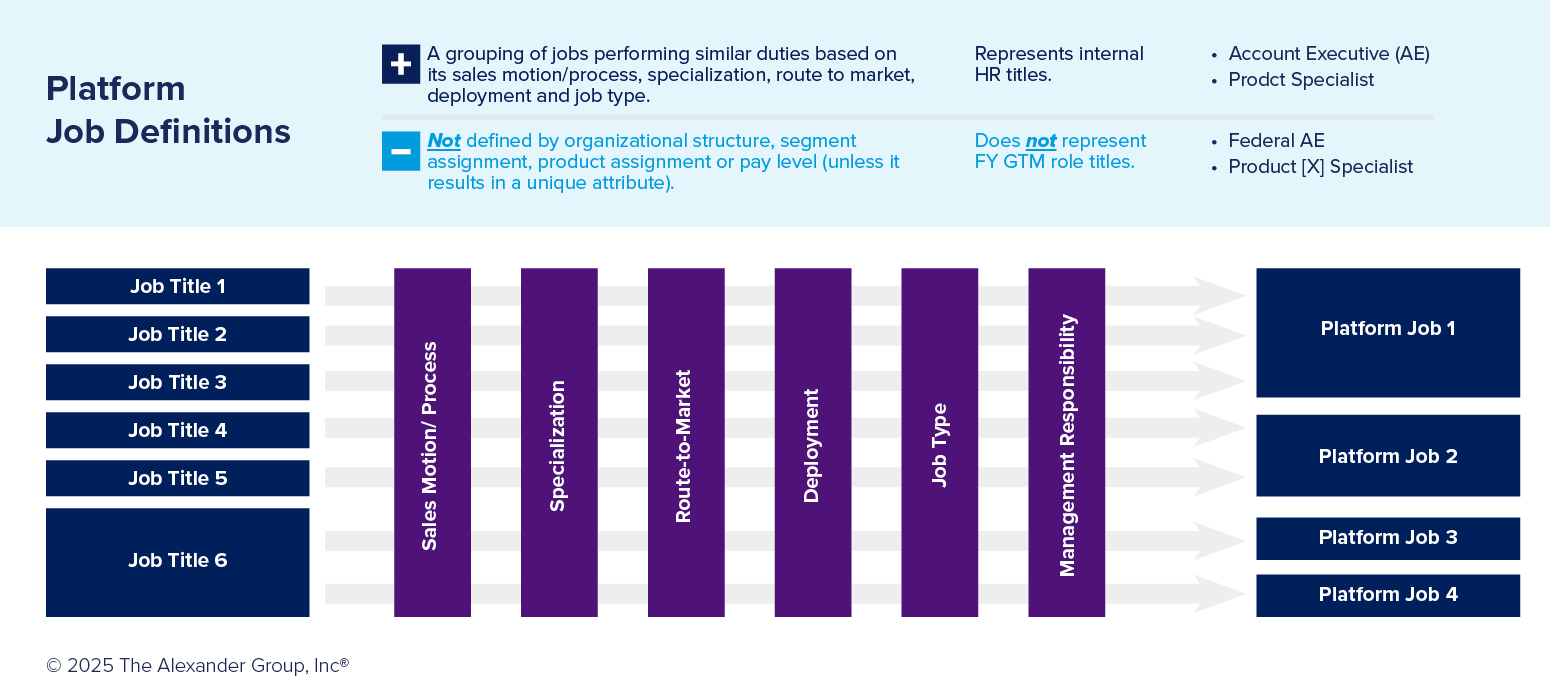For WorldatWork Members
- 3 Sales Compensation Challenges that AI Can Help Tackle, Workspan Magazine article
- Sales Compensation Plan: Organizational Inventory, tool
- Sales Performance Management Technology Selection Guide, tool
- Sales Performance Management, research
- Return on Sales Expense, research
For Everyone
- The Power of Pay-for-Performance Sales Compensation Plans, Workspan Daily article
- The Role of Profitability Metrics in Sales Compensation Plans, Workspan Daily article
- 5 Keys: Using Incentive Comp to Lift Performance, Profits, Innovation, Workspan Daily article
- Sales Comp ’25, conference
Most organizations see the benefit of driving a global sales compensation framework across local countries. A global framework can allow an organization to:
- Direct all plans to align with its philosophies/goals;
- Enable best-in-class practices;
- Ensure pay is fair and equitable;
- Centralize administration; and,
- Reduce management costs.
In fact, recent Alexander Group research showed 60% of organizations are looking to drive more global consistency within their sales compensation plans to take advantage of these benefits.
The Dilemma
How organizations go to market in each country, though, is not always the same. Thus, they should investigate applicable local country intricacies, including:
- Different products/services. Products and services may vary by country/region based on customer needs, feasibility and distribution.
- Different growth phases and strategies. Each country likely will be in a different phase of growth (e.g., startup vs. mature), resulting in different revenue growth strategies. For example, startup markets may prioritize new logo growth and market penetration whereas mature markets may focus on maintaining market share and driving expansion.
- Different routes to market. Different countries may use different channels to sell their offerings. For example, an organization may use a direct sales model in its mature countries and third-party partners/agents in emerging countries where it does not have a legal entity and/or needs to leverage a pre-existing ecosystem.
- Different deployment. Established countries with many resources likely will specialize their jobs to drive more efficient and effective go-to-market (GTM) models. They may use customer-segment-based sellers, overlay specialists and other resources to provide the right expertise to the right customer at the right time. On the contrary, emerging markets with limited resources generally will use hybrid jobs that cover multiple customer segments, products and even routes-to-market (e.g., direct and channel).
- Different cultural norms. Some countries have cultures that are more risk-tolerant than others. For example, the U.S. is quite entrepreneurial and, thus, local sellers are generally accustomed to high-risk, high-reward sales compensation structures (e.g., a 50% base, 50% variable-pay mix). Other countries like Japan favor relationships and hierarchy, and may use less aggressive pay mixes in sales compensation plan (e.g., 60% base, 40% variable).
The Impact
Within this sales environment, many organizations often use one job title that accommodates various responsibilities required across the globe. For example, an account manager may focus on closing new accounts in an emerging country, whereas the role may be responsible for cross-sell and upsell in another mature country.
The Solution
To address these global-local challenges, organizations can use the following strategies:
- Create a set of standard GTM/coverage blueprints. Consider creating coverage blueprints for emerging, growth and mature countries that can be uniformly applied across the globe, regardless of assigned region. For example, use an emerging coverage model with a common set of jobs for smaller countries like Turkey and the Philippines.
- Identify a global list of platform jobs. Instead of allowing each region leader to build their own jobs, build a set of platform jobs that can be globally applied. For example, identify a hunter territory representative job focused on landing new logos regardless of country. If a role is responsible for finding cross-sell and upsell opportunities within existing accounts, they should be called a different job. The figure below articulates all the elements included in defining platform jobs.

- Build an aligned sales compensation framework (and/or aligned sales compensation plans). Build sales compensation plans for each platform job. Execution typically depends on your organization model. If there is a global leadership model and GTM strategy, create unique plans for each platform job. If there is a region leadership model with regional GTM strategies, create a sanctioned framework for each platform job that region leadership can leverage to build plans. This helps ensure each region uses best-in-class practices that align with corporate strategy and reward philosophy.
So, in a nutshell, to address the challenges posed by varying local country intricacies, market-leading organizations should develop GTM coverage blueprints, identify a set of globally consistent platform jobs and create sales compensation plans for each platform job.
How to Apply It
To move this forward, begin by building a business case showcasing the impacts of the proposed changes. Convene the right governance model that uses cross-functional and cross-region stakeholders to gather local needs, create platform jobs and build a sales compensation plan framework (with related plans) that align with each job. Once the designs are complete, leverage sound change management practices, including:
- An impact analysis;
- A documented transition strategy;
- Leadership buy-in;
- Cascading communications;
- Effective messaging;
- Detailed implementation planning; and,
- Ongoing implementation and feedback loops.
Organizations that successfully apply a global sales compensation framework that accounts for local intricacies can provide motivational plans that drive strategic growth goals at the right cost.
Editor’s Note: Additional Content
For more information and resources related to this article, see the pages below, which offer quick access to all WorldatWork content on these topics:







